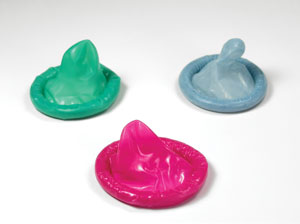Condoms on campus
In an effort to help prevent the spread of STIs and unintended pregnancies on campus, the CEU chapter of the Gay-Straight Alliance has helped host “National Condom Week” for the second year on campus to educate students about condoms and safe sex. This year NCW lasted from February 14-22.
The GSA had a table set-up in the JLSC where they distributed condoms, candy, contraceptive information as well as pamphlets on condoms, information on STI (sexually transmitted infections) prevention and the location of the Health and Wellness Clinic to access these services.

This archived article was written by: Nick Critchlow
In an effort to help prevent the spread of STIs and unintended pregnancies on campus, the CEU chapter of the Gay-Straight Alliance has helped host “National Condom Week” for the second year on campus to educate students about condoms and safe sex. This year NCW lasted from February 14-22.
The GSA had a table set-up in the JLSC where they distributed condoms, candy, contraceptive information as well as pamphlets on condoms, information on STI (sexually transmitted infections) prevention and the location of the Health and Wellness Clinic to access these services.
CEU student JB Arriola was one of the co-hosts of the table. “I think that this time we did rather well, there were a lot of people who went by and did not know a lot about contraceptives, mental health support, the different avenues that we went through, and we just had a lot more information available,” says Arriola.
National Condom Week was started in 1978 by students at the University of California-Berkeley and now involves more than 350 universities, high schools, AIDS/STD education organizations, family planning clinics and pharmacies who sponsor educational activities during the week.
However there are some groups who disapprove of National Condom Week’s message. In 1995, Christian Leadership Ministries sponsored a series of advertisements on more than 30 college campuses to encourage marriage as the only appropriate arena for sex. One ad asks, “Love or Latex?” while another reads “Who needs a condom when you have a commitment?” Several ads claim sexual activity outside of marriage can lead only to a broken heart.
According to recent reports from the national Centers for Disease Control and Prevention, U.S. consumers purchase more than 440 million condoms per year and when used properly and consistently, condoms are more than 97 percent effective in preventing pregnancy and sexually transmitted infections. In response to public concern about failure rates for condoms, the CDC studied how often couples actually use condoms. Researchers found only 30 to 60 percent of men who claimed to use condoms for contraception used them every time, which accounts for much of the “failure rate.” The CDC reports it costs 43 times more to treat STIs than to prevent them.




